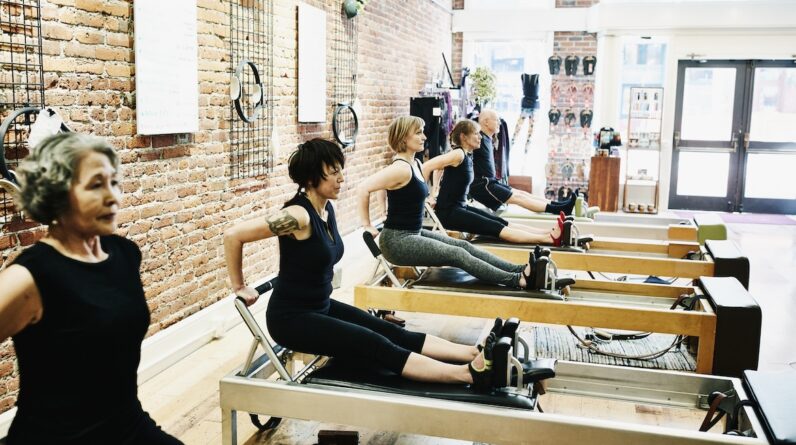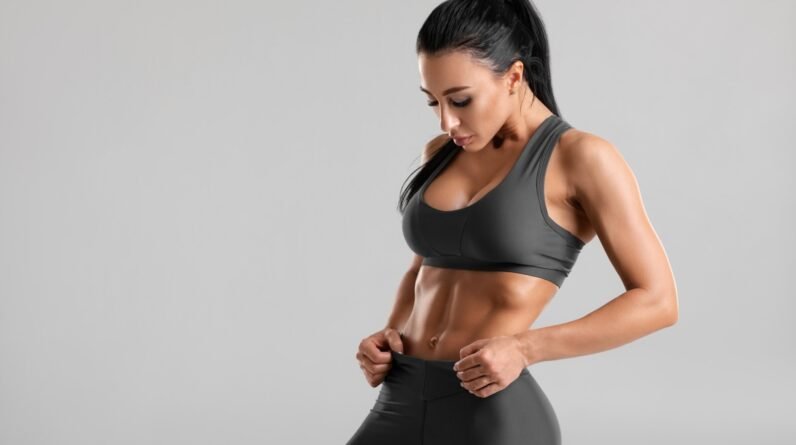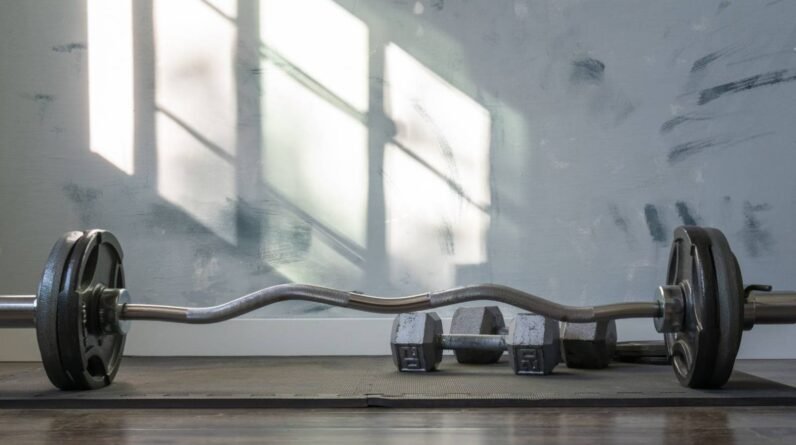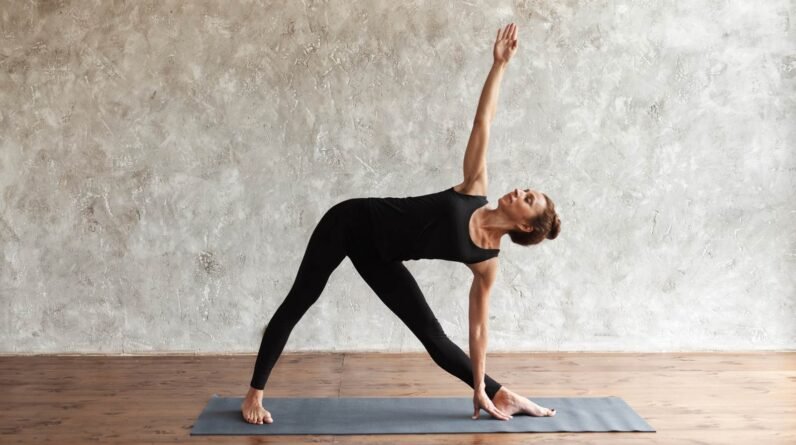
Pilates has been around for more than a century, but the exercise method has never been more popular than it is today.
In 2023, nearly 12 million Americans reported practicing Pilates, an increase of 15 percent from the year before. Google searches for “Pilates” have tripled over the past five years, with the market expected to double in size by 2030, according to the Pilates Education Institute. Heck, Pilates even got its moment in the pop culture spotlight with a recent skit on SNL.
Why are so many of us embracing Pilates? Perhaps because the workout method pioneered by Joseph Pilates in 1926–combining controlled movements and proper breathing techniques with a holistic mind, body, and spirit approach–can be a perfect antidote to our busy, stressed-out modern lives.
Not only does Pilates have an array of benefits, it’s low impact and can be done by people of all ages and fitness levels, says Portia Page, CPT, NCPT, a nationally certified Pilates teacher and Balanced Body education curriculum coordinator.
“Pilates is something you can do a little of every day with amazing results,” Page says. “It’s an exercise designed to elongate and strengthen the body by emphasizing balance, alignment, proper breathing, and core stability and strength. After just a few sessions of Pilates, you’ll understand how helpful correct and flowing movement can be to your mind and body.”
Pilates can help us in physical ways, such as improving daily posture (hello, those of us hunched over screens all day), strength, and mobility, but also mentally and emotionally by teaching us to use our breath correctly and bolstering self-confidence when we master challenges, Page explains.
But to get the most out of your Pilates session, there are certain things you need to be mindful of—whether you’re a beginner or long-time devotee, or prefer mat or reformer classes.
Here are six Pilates tips experts follow get the most out of their Pilates workouts—here’s how you can, too.
If you’re new to Pilates—or if you don’t have the time or energy—it’s not necessary to push yourself through a long session. Even doing 10 to 15 minutes of Pilates per day is fine, especially for beginners, according to Page. “This will allow you time to practice, build up slowly, and ensure that you get good movement every day,” she says. “Practice truly does make perfect–or as close to perfect as you can get for that day.”
1. Focus on your breath
Joseph Pilates is quoted as saying, “Above all, learn how to breathe correctly,” and this mantra is a foundation of Pilates. Each exercise in Pilates is performed in sync with inhales and exhales, and breathing properly is essential to staying centered and enhancing each movement, according to Page.
“The breath can help to bring you to the session, allowing your mind and body to arrive in the present,” she says. “I always start by finding and following the breath as this allows the body time to figure out ‘where’ you are now. Bringing awareness to breath at the very start can help remind participants to stay with the breath throughout.”
Want to make sure you’re in tune with your breath? Jamie Maitland, certified health coach, Pilates and fitness instructor, and founder of boutique fitness studio The Office 954 in Ft. Lauderdale, Florida, recommends the following:
- Start by putting your hands around your ribcage to feel it expand as you inhale, then contract as you exhale.
- Begin with a single count for each inhale and single count for each exhale.
- Once you feel comfortable, work your way up to three to five counts per inhale and exhale.
2. Ease into your session slowly
One common Pilates mistake, according to Page, is rushing into complex exercises instead of working up to them by taking steps to build the skills necessary for more challenging movements. To use a swimming analogy, Pilates is not about diving in headfirst, but dipping your toes in and entering the water slowly.
Warming up sufficiently with “small, micro movements help set the foundation for a strong ‘stance’ in whatever position you’re in and with getting your body to move into the more challenging exercises and movements,” Page says. “By doing this, it helps us get to the end result slowly and with ease–building the necessary skills one step at a time versus muscling and forcing your way into a position or exercise.”
If you’re unsure how to warm up or if you’re warming up enough, try taking a class at a Pilates studio or on a virtual platform where an instructor can guide you through everything.
3. Practice perfecting your alignment
In Pilates, alignment refers to proper positioning of body parts such as your head, spine, feet, and ankles as they relate to each other while you perform an exercise. Alignment is a fundamental element of Pilates that helps ensure balance and proper form, so you get the most out of each exercise, Maitland explains.
One of the best ways to maintain proper alignment is to take a class where you can rely on an instructor for verbal cues or to gently reposition you if needed, Maitland says. If in-person classes aren’t available to you, try taking an online class, pausing when needed to position yourself like the instructor or to check your form in a mirror.
Maitland also likes placing a towel or band on the floor to make sure the knees, feet, and hands are lined up where they should be during a move. If you find your feet sliding and throwing off your form, you can also try wearing a pair of grippy socks designed for Pilates.
To work on your alignment, Page recommends performing this exercise daily in different positions including standing, seated, supine (on your back), on all fours, and lying on your side:
- Get into position, close your eyes, and breathe.
- Think about finding balance and keeping your head in line with your ribs, in line with your pelvis, and in line with your feet (if standing). This alignment will feel very different in each of these positions.
- Use breath and small adjustments until you find what feels right to you (which is the most important thing).
“Quality over quantity—stay focused on the precision and integrity of your moves, not your speed, and less is more.” —Jamie Maitland, certified Pilates instructor
4. Keep it slow and controlled
If there’s one thing Pilates is not, it’s a race. Each movement is meant to be done with proper form and control, according to Maitland.
“Quality over quantity—stay focused on the precision and integrity of your moves, not your speed, and less is more,” she says.
How do you know if you’re going too fast?
“You won’t feel the exercise as effectively,” Maitland says. “For example, if you’re doing leg lifts—lying on your side or in side plank—and are mindlessly swinging your leg without intention, you just feel bounciness. If you lock in your core, keep the rest of your body quiet, and lift your leg using your glute, you’ll feel it a lot more.”
You’ll know you’re going at the right pace if you start to feel the muscle(s) you’re supposed to be working burn within five to 10 seconds.
5. Stay focused
Pilates is meant to nurture and strengthen not just your body, but also your mind and spirit—meaning you want to be present, not chatting with your neighbor, glancing at your phone, or thinking about your to-do list.
“One of the most common mistakes I see is not being focused,” Maitland says. “When I instruct a class, oftentimes I’ll be able to recognize the clients who are zoned out as opposed to those who are zoned in—a person’s form will reflect where their mind is at. Pilates is a very cerebral workout and you need to be there.”
Maitland’s favorite hack if you find yourself losing focus: Rub your thumb and pointer finger together like a little violin for a few seconds to bring you back to the room and present moment.
6. Use equipment to take your workout up a notch
Anyone who’s done Pilates will tell you that you don’t need to use any equipment to get a great workout. But, if you’re looking for new challenges, adding Pilates equipment like resistance bands, light weighted balls, or dumbbells can help kick things up a notch. Maitland also is a fan of Pilates rings to add variety and intensity to workouts.
One of Maitland’s favorite Pilates ring exercises:
- Lie on your back with bent knees and your feet flat on the floor.
- Place a Pilates ring between your inner thighs.
- Lift your legs so they’re in tabletop position, knees bent at a 90-degree angle. (You can also leave your feet on the floor to make it easier.)
- Squeeze the ring in with your inner thighs in a slow, controlled manner and return to starting position.
- Repeat for 15 reps, then 15 pulses (smaller movements, only squeezing in about a quarter of the way).
- Squeeze your thighs in and hold for a count of 15.
- Repeat the entire sequence three to four times.
More Pilates equipment to try
- Gaiam Restore Mini Loop Bands 5-Pack ($15, Gaiam.com)
- Gaiam Grippy Yoga Barre Socks ($10, Amazon.com)
- Balanced Body Ultra-Fit Circle Pilates Ring ($40, Amazon.com)
- Balanced Body 3-Pound Weighted Ball ($17, Amazon.com)







